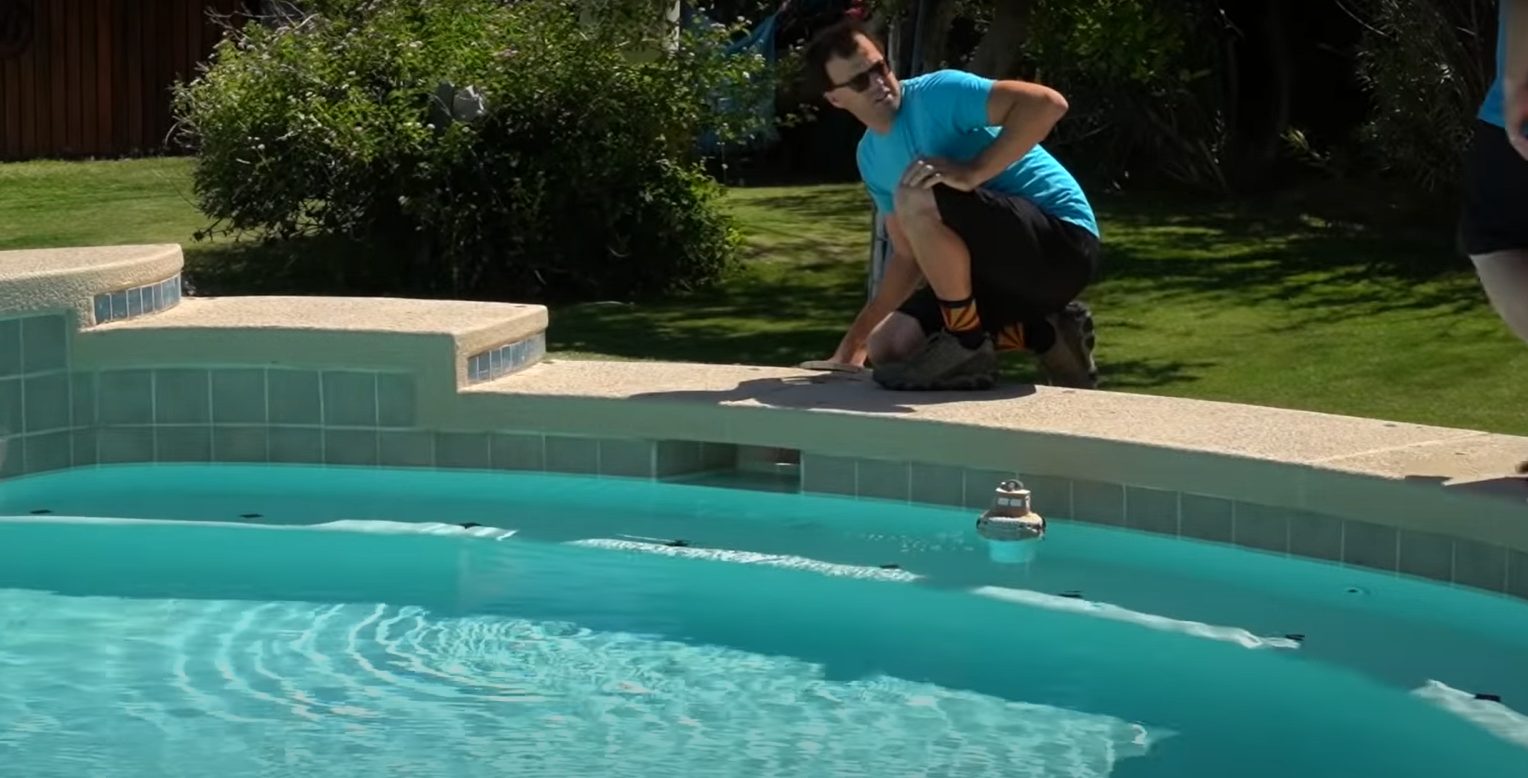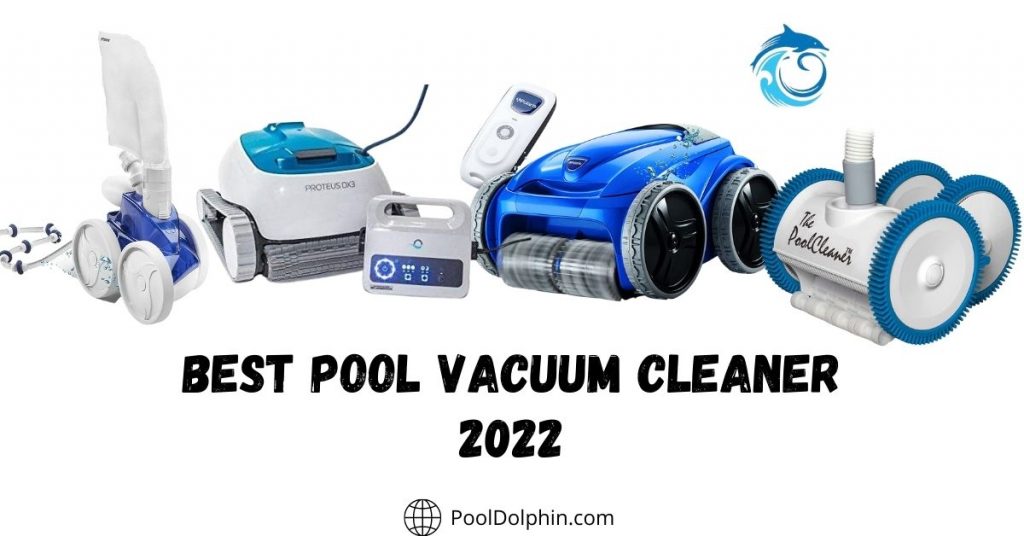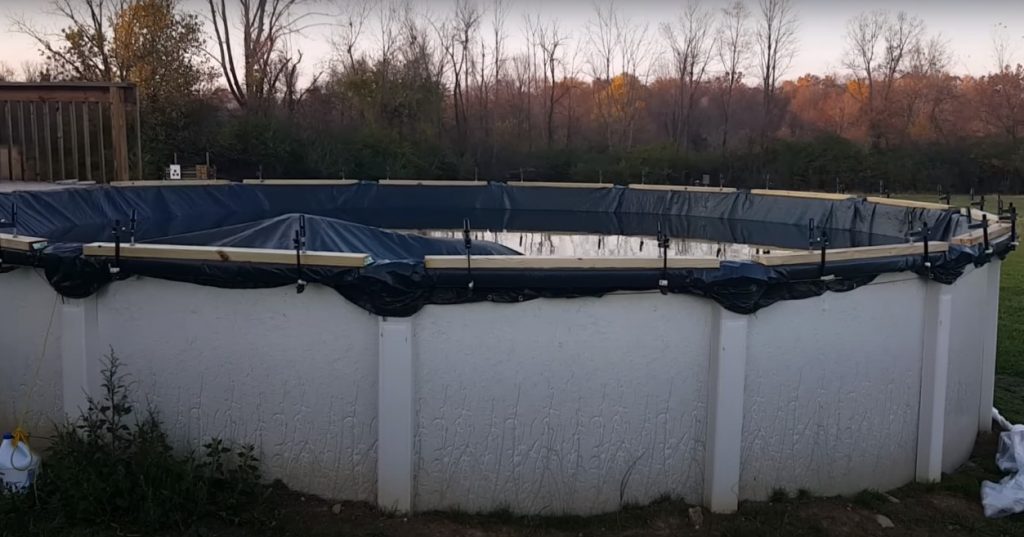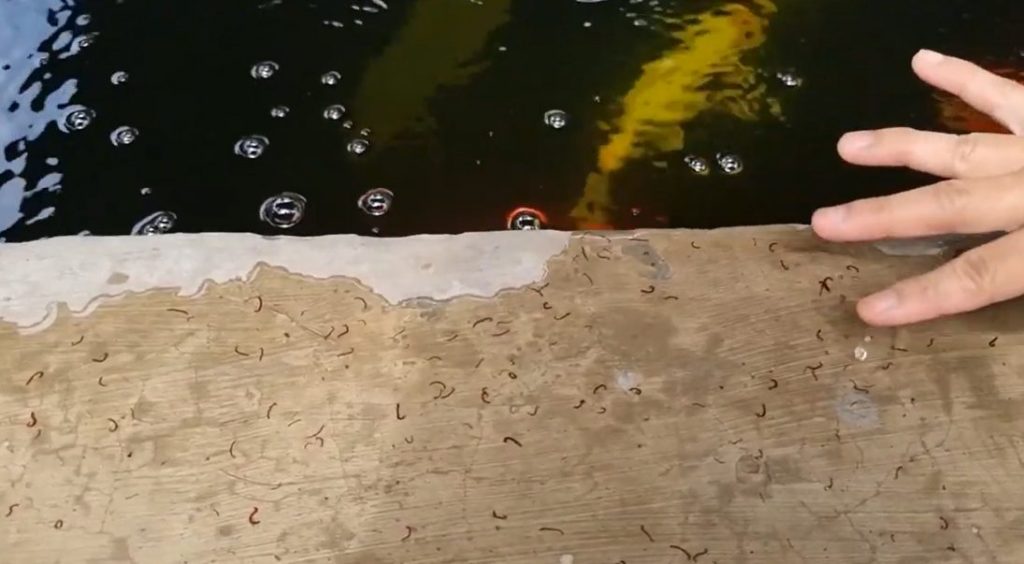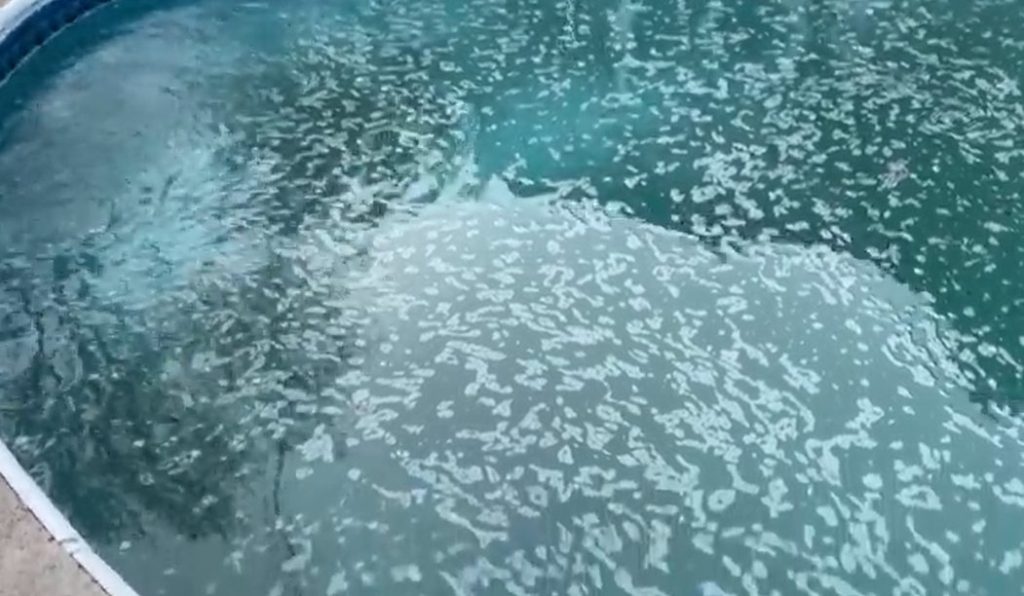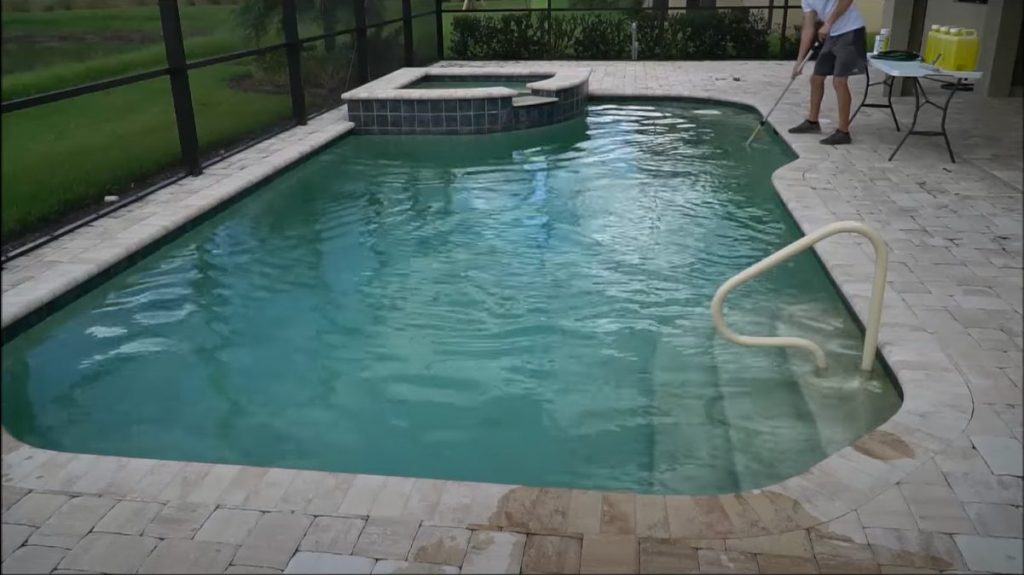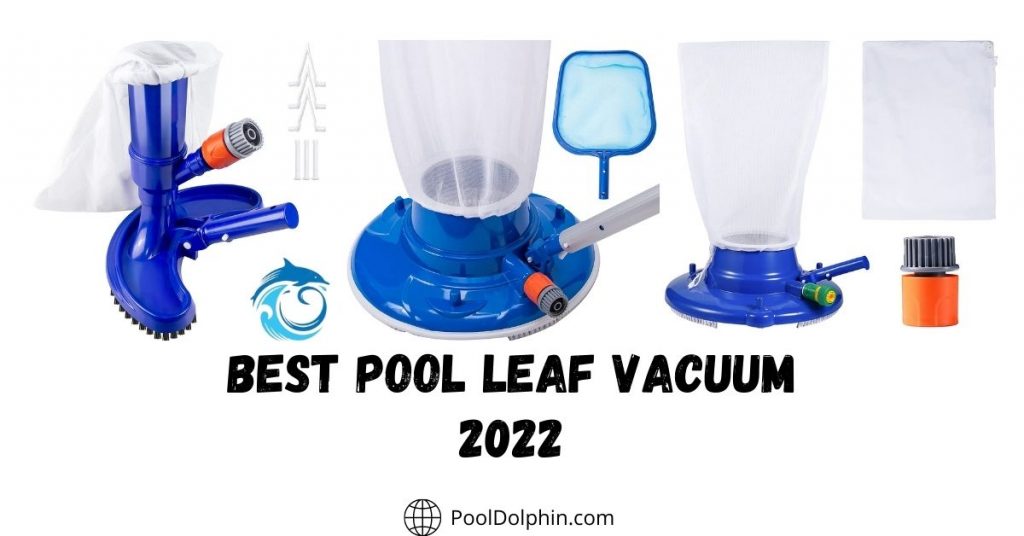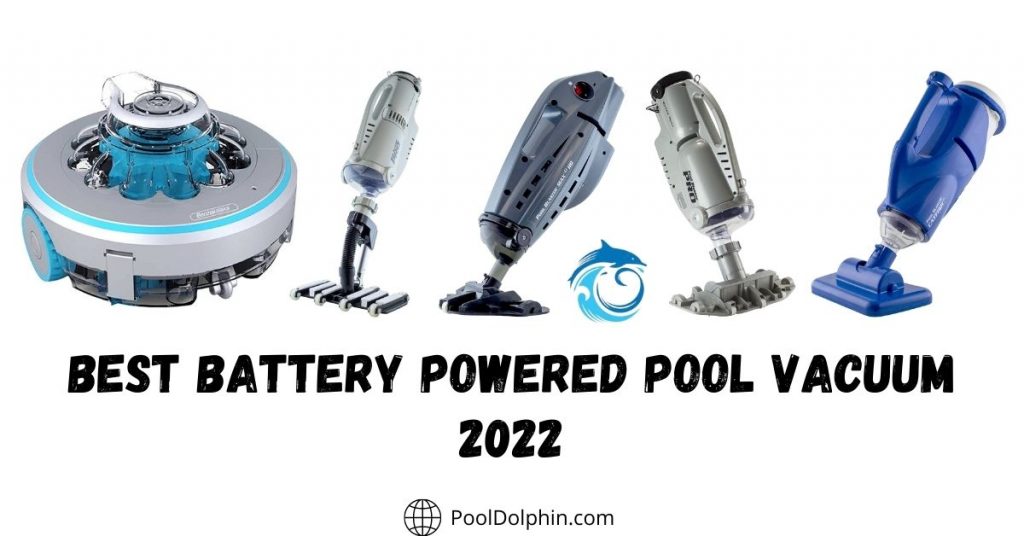When searching for a pool leak detection, we must also take into consideration other problems that may not be from a damaged pipe.
We need to rule out evaporation, cracks in the pool’s foundation, and defects in plaster work since those are common signs of a pool leak.
Here’s a quick video below that demonstrates the techniques for locating a pool leak and fixing it yourself. If you’d like to read on, here’s a complete pool leak detection tutorial where I explain how to find that pool leakage.
How Can You Tell Your Pool is Leaking?
Before you run any tests inside your pool, you’ll need to make sure the leak isn’t happening somewhere in your plumbing or pool equipment. If a part of your pool equipment has sprung a leak, there are a number of parts that are easy to access and inspect.
However, if your pool was installed properly, it’s really difficult for water to leak out of pipes on its own.
But that doesn’t necessarily mean you can rule it out – an inground swimming pool generally has a liner which eliminates the chances of cracks in parts of your plumbing system being visible above ground.
It’s important to test your pool regularly so that you know that whether or not there is something wrong with the pipes, you can find out where exactly the issue lies as soon as possible.
Your Pool Have a Leak or is it Evaporation
To help you pinpoint leaks in the pool, we carry out two simple tests. The first test, the Bucket Test, is done by filling a bucket with water and setting it alongside the pool for 24 hours. If you detect a drop in water level, this means that evaporation may be causing your leak.
The second test, Ink Test, involves putting a few drops of ink into the skimmer hose at intervals. If your pool becomes tinged with ink at any point within an hour after injection then there is an immediate leak within reaching distance of your skimmer hose.
1- Pool Leak Detection: Bucket Test
This homemade DIY method is a breeze to implement and the items you need may already be lying unused inside your home:
- Plastic Bucket
- Waterproof Marker or Tape
- Place the bucker and fill it with water. Place the empty bucket on the pool’s second step and fill the water at the pool level. Use the marker to mark that level which is equal to pool water.
- Turn off the filling pump. Make sure to turn off the filling pump and other auto refilling equipments.
- Analyze the level. After 24 hours compare the level of bucket and pool water level, if both are goes down equally. It means leaks due to evaporation don’t worry. And if the pool water level is lower then bucket level it means leaks is happening somewhere.
- Repeat again with the pump. Repeat this process again but now the pool pump is remain on. After 24 hours compare again and note the results.
- Analyze new results. Now if the pool water level is down more to the bucket. It means leak likely in filter system or plumbing.
2- Pool Leak Detection: Dye Test
This method will help you locate the exact spot of your pool drain leak. This technique may be a good way to start off with if you’re looking for an inexpensive way to pinpoint the specific area where water is likely escaping from.
You can find these specialized dyes in most discount tool or department stores, as well as at some grocery stores.
- Check the Ground and Walls the Pool for Wetness. If the ground is wet where it shouldn’t be, your pool may be leaking in the area and seeping somewhere lower in the ground. Narrow down as much of an area as possible before using the leak finder dye.
- Turn Off the Pump and Water Features. If you use an aquarium dye to help find where a leak is, the water needs to be as still as possible. This will help in pinpointing leaks in or near the skimmer.
- Use the Pool Leak Detection Dye. Come close to the edge of swimming pool where you think it may leak. Without touching water drop down the some drops of dye in water. You will see the colored dye move to the leakage point. Note it and mark that pont.
If you suspect it is at the bottom of your pool, you will need to lower a clear container into your pool to confirm that this is indeed the case.
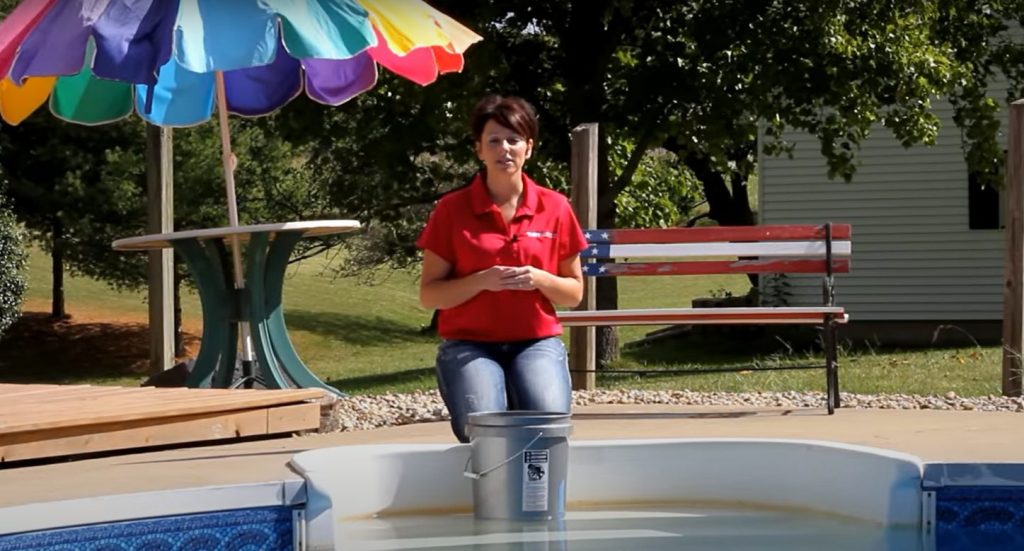
Once you find the area where it seems like water is leaking out, place one of these plastic strips in the water and sit back as it changes colors. The colors will give you an indication of which part of your pool needs.
You can use leakmaster pre filled leak finder dye.

This pre-filled tester helps you find the precise location of a structural pool leak. Simply squirt the syringe into the water close to the potential problem area and watch. How this dye moves toward the problem area to help you pinpoint where exactly its source may be.
How To Fix a Leak in Your Pool’s Vinyl Liner
Fixing a leak in a vinyl pool liner is pretty easy. And a messily done patch by an amateur can last for years. But no matter what you do when it comes to repairing your pool’s liner, patches are not permanent solutions.
A hole that’s large enough will snag or peel off over time due to tears of the wall.
When potential leaks are detected, there are typically three Methods for the homeowner. Each of these options can be used underwater or dry and let’s remember no water should need to be drained from your pool in order to apply a patch that would prevent a leak.
If there is any chance you will have to drain out too much water though as if you have an above ground pool. Make sure it’s completely filled with water before you attempt repairs otherwise, the walls may collapse and damage your liner.
Finally, do note that emptying out any pool with a vinyl liner could make the liner brittle which means it’s better to fix any leaks while they’re still beneath the surface.
1- Waterproof Tape

Similar to duct tape, this tape is a good, cost effective option for quick repairs. It’s best used for small leaks and patching. Just make sure you overlap each new piece by at least an inch to ensure proper adhesion per each application.
This tape will peel if left in one place too long and exposed to the elements on a regular basis so plan accordingly.
2- Peel-and-Stick Patches

These pool patches are made from real vinyl and are designed to be used in pools. Some of the patches come pre-cut into round shapes so that they won’t curl up around the edges if you decide to seal a tear or opening measuring less than an inch in diameter.
These pieces are also inexpensive and easy to use: simply remove the backing and press them straight against your swimming pool walls.
As these patches can provide only temporary relief, they’re mostly best applied to small leaks or punctures on your surface area.
3- Vinyl Patch Kit

If you’re working with a larger hole to repair or if you want a longer-term solution, use a vinyl patch kit.
These kits come with large chunks of blue or clear liner that’s ready to stick down once mixed together and special underwater vinyl adhesive, which is more tricky to use than waterproof tape or non-permanent adhesive.
When To Ask a Professional to Test and Repair a Pool Leak
Pool leak detection services are known to be expensive by many homeowners, but there are actually several ways that a homeowner can go about doing this at home. While some pool companies would include minor repairs in their leak detection service price,
It’s still always important for any pool owner to feel confident in completing patch jobs using DIY methods before professionals are hired to do the job.
Remember, if you ever find pool repair too difficult or decide that you’re not getting the results you need, it’s best to consult a professional.

